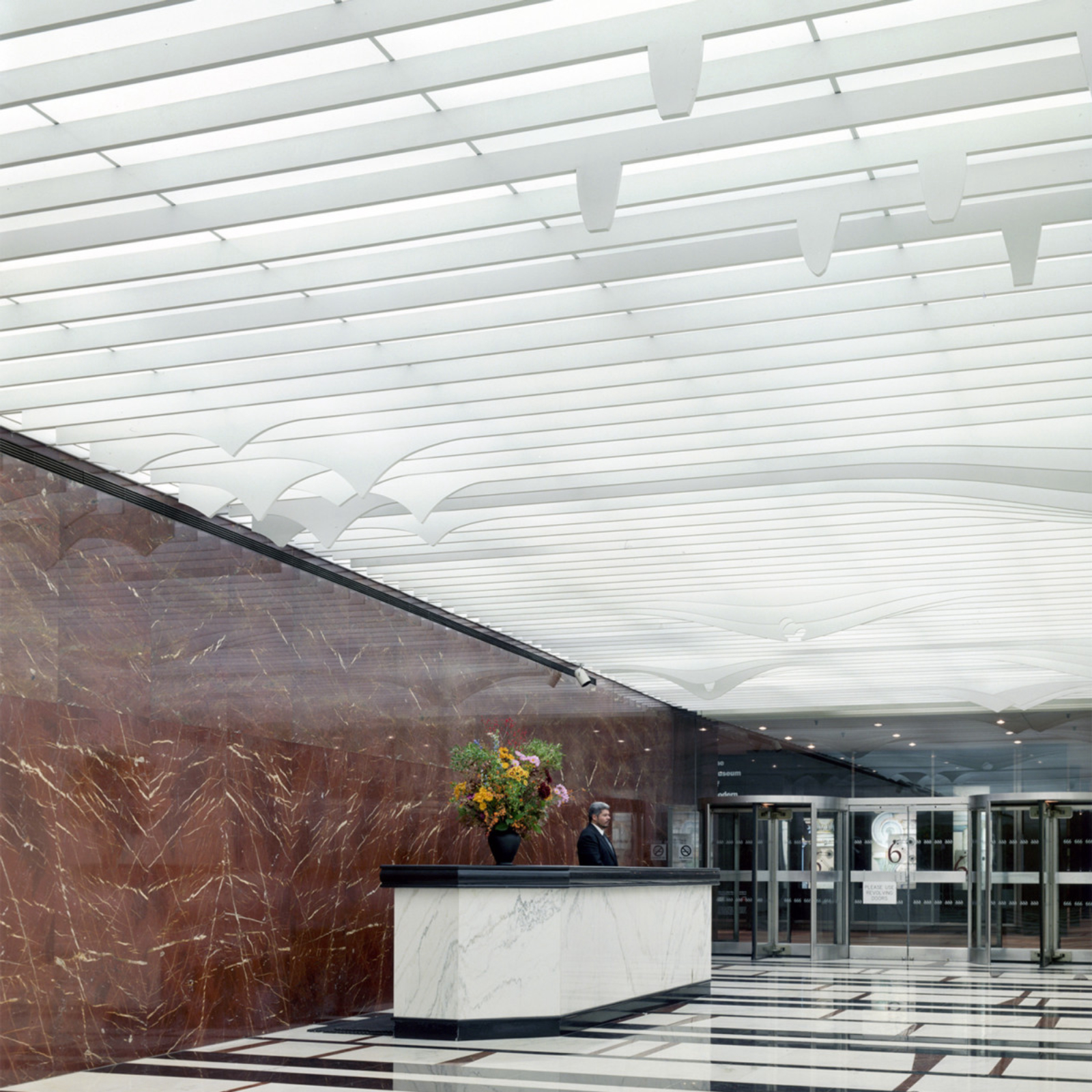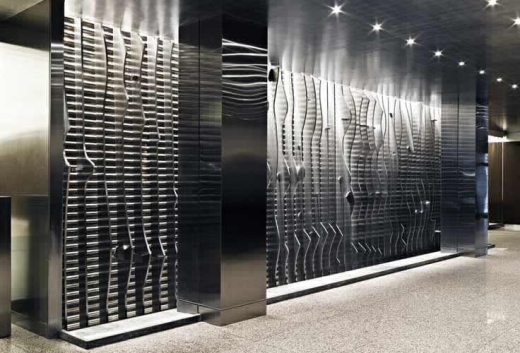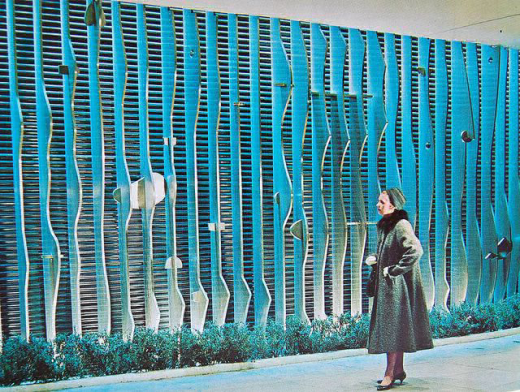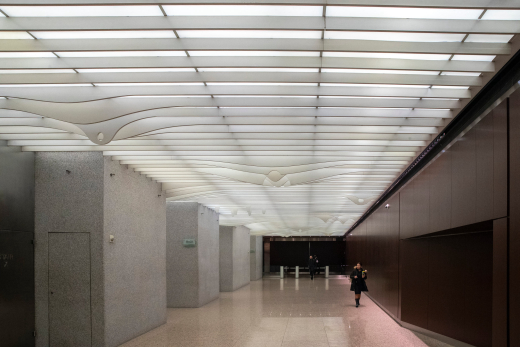Update December 14, 2020
On December 11, 2020, Untapped New York reported that Noguchi's lobby has officially been removed from 666 5th Avenue. Although the removal of the site-specific work from its original context is unfortunate, there is still the possibility of a second life for Noguchi's design. Noguchi Museum director Brett Littman explained that "over the course of several weeks in October and November 2020 Ceiling and Waterfall for the Lobby of 666 Fifth Avenue was documented, deinstalled, and catalogued under the oversight of the Isamu Noguchi Foundation and Garden Museum."
"Isamu Noguchi Lobby at 666 Fifth Avenue Has Been Removed," Untapped New York, December 11, 2020.
Background
Isamu Noguchi's artwork in the midcentury skyscraper at 666 Fifth Avenue has not escaped the pressures of the New York City real estate market. The building, including the lobby with Noguchi's artwork, has been modified over the years to in order to maintain the building's profitability, and now the current owner, Brookfield Properties, wants to remove the artist's work completely.
Completed in 1957, the building at 666 Fifth Avenue (originally known as the Tishman Building) was designed by the firm of Carson & Lundin and built by Tishman Realty and Construction. Noguchi's undulating ceiling, which he called "a landscape of clouds," and a floor-to-ceiling wall fountain that echoes the ceiling design were original to the space. In a 2010 article, "Art, Architecture and Public Space in New York," Docomomo US President Theo Prudon argues that, unlike other examples of sculpture in modern buildings, "this installation is different . . . in that it is not a mere installation but attempts to shape the entire environment suggesting a closer working relationship [with the architects]."




